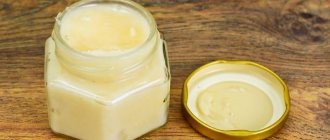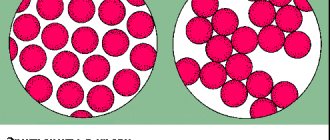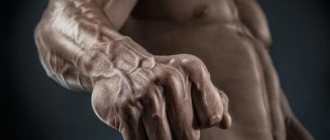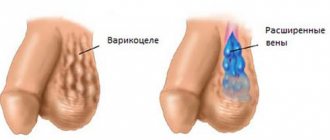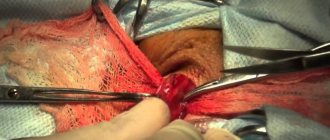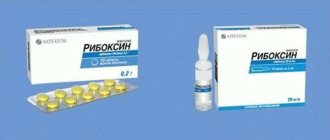Treatment under the compulsory medical insurance policy is possible!
Submit your application
Follow the news, subscribe to our social networks
Details
Varicocele - dilation of the veins of the spermatic cord in men - is a widespread disease, found in 16.2% of adult men. The highest incidence of varicocele (15-19%) occurs at 14-15 years of age. In children under 10 years of age, varicocele is much less common, in 0.7-5.7% of cases. In addition to aesthetic problems and some painful symptoms, varicocele contributes to infertility: 30-40% of men examined for infertility are diagnosed with this pathology. The disease's mechanism of development resembles pelvic varicose veins in women and is treated according to similar principles.
Most often, varicocele develops due to compression of the left renal vein between the superior mesenteric artery and the aorta with a congenital acute angle of origin. This leads to difficulty in venous outflow from the left kidney and reverse flow (reflux) of venous blood through the testicular vein.
The likelihood of developing male infertility
The time has passed when women were considered the main “culprits” of infertile marriages. According to modern data, more than 40% of cases of infertility in men are associated with dilation of the veins of the spermatic cord and testicles, and the prognosis worsens over time. Therefore, operations to eliminate varicocele should be performed at a young age. After successful treatment, the risk of testicular atrophy and infertility is significantly reduced. It is now possible to treat varicocele of any degree using endovascular surgery without incisions and pain, so you should not delay this treatment for a long time.
What does it look like
A photo of a varicocele clearly demonstrates a male problem - the scrotum on one side (usually the left) is slightly lower. The skin covering the testicle does not hide the contours of the veins. When self-palpating the venous vessels, a man can feel their expansion. The patient may not even be aware of other symptoms of the disease. Palpation of the scrotum and visual examination are necessary actions for all men who care about their health. This is especially true for males planning fatherhood. You need to be regularly examined by a urologist. Medical examinations and consultations with qualified specialists are offered by the Global Clinic Center, which has extensive experience in the treatment of varicocele.
Causes of development and risk factors
Expansion of the pampiniform venous plexus of the testicle - varicocele often develops on the left, since the left testicular vein, unlike the right, flows into the vein of the left kidney. Due to anatomical features (compression between the aorta and mesenteric artery), blood pressure in the left renal vein system may increase. The blood begins to put pressure on the valves of the testicular vein and lead to the reverse flow of blood through it. Violation of venous hemodynamics leads to stagnation in the pampiniform plexus of the left testicle with the development of varicose veins of the spermatic cord and the development of testicular varicocele. In 10% of cases, there is a high anomalous drainage of the right testicular vein into the right renal vein, which can cause a varicocele on the right.
A significant increase in pressure in the renal vein causes incompetence of the testicular vein valves and the development of a bypass with reverse flow of renal venous blood through the testicular vein into the pampiniform plexus. A congenital valvular defect of the testicular vein is also possible. In the standing position of the patient, the blood flow in the testicular vein is distorted and directed centrifugally from the renal vein down into the pampiniform plexus (orthostatic varicocele). In the horizontal position of the patient, the direction of the venous flow is restored and becomes normal - from the testicular vein to the renal vein. Dilatation of the veins of the spermatic cord and scrotal organs is usually detected during puberty and tends to steadily progress.
One of the types of hypertension in the vessels of the spermatic cord is the formation of an arteriovenous fistula in the renal vascular bed, as happens with a kidney tumor or post-traumatic arteriovenous fistula. Extreme varicocele, as a complication of the disease, can develop within a very short time. The development of the disease is based on the development of venous hypertension in the kidney and reverse blood flow to the testicles.
Statistics
Due to the anatomical features of the veins in the testicular area, varicocele most often forms on the left side. 80-95% are allocated to these cases. Right-sided testicular varicose veins are not so common (up to 8%). On both sides, varicocele occurs in 2-12 cases out of a hundred. Male disease is “linked” to the age of the patients. A large percentage (19) of problems with testicular veins are noted by doctors in adolescents. If we consider the reproductive age of men, then the statistics of varicose veins reach 35%. These are sad numbers, because... Varicocele in sexually mature men can cause infertility. Treatment of the disease should begin at the earliest stages.
Treatment at the Innovative Vascular Center
The Innovative Vascular Center uses endovascular technology to eliminate varicoceles. We perform retrograde venography of the testicular vein and embolize this dilated vein with special coils and sclerosants. This operation for varicocele does not require incisions or hospitalization for treatment, but reliably eliminates venous hypertension in the left testicle.
Early diagnosis and treatment are important for the outcome of these patients. The need for timely intervention is indicated by the fact that among patients operated on before the age of 21, the risk of infertility is minimal, and before the age of 30, the probability of childlessness increases 4 times! The earlier surgery is performed for varicocele in men, the greater the likelihood of avoiding complications. This is all the more important because modern technologies are highly effective and completely painless and have low prices.
Advantages of Marmara microsurgery:
- A small cosmetic incision in the groin area, in the hair growth area (the scar is almost invisible)
- The greatest efficiency of the operation is achieved through the use of operating binoculars and microsurgical instruments
- Lowest percentage of relapses and complications (less than 5 percent)
- Can be performed on an outpatient basis, without hospitalization
- Short and easy postoperative and recovery period
I am aware of my responsibility for preserving the main thing that my patient trusts me, and I will do everything to justify the trust!
Prevention
The main rule for preventing the disease is preventive examinations, always with the involvement of ultrasound specialists. Urologists recommend:
- Avoid diseases of the genitourinary system and prevent their development into a chronic form.
- Do not self-medicate.
- Do not disrupt the thermoregulation of the genitourinary system.
- Avoid excessive physical activity.
- Lead a healthy lifestyle.
Preventive measures
An annual visit to the urologist, even in the absence of any complaints or symptoms, in combination with a healthy lifestyle, decisive and unconditional cessation of bad habits (primarily smoking) and active sports is the best set of preventive measures at any age. You should also pay attention to the functioning of the gastrointestinal tract, and take care to exclude fatty, fried and spicy foods from your diet. Clothing should be comfortable and not constrict the genitals. It is important to remember that hypothermia of the body is an additional provoking factor for the occurrence of varicocele or its progression.
Varicocele. Symptoms
The danger of the first stages of the disease is that it is asymptomatic. The problem is discovered by chance, during medical examinations or when patients address other male issues (for example, in connection with infertility). Symptoms of varicocele characteristic of other degrees of the disease:
- nagging pain and discomfort in the left side of the scrotum, testicle and groin area;
- drooping left (mostly) testicle, interfering with walking;
- decrease in the size of the testicle on the left;
- manifestation of the contours of venous vessels;
- appearance of pain.
Varicocele is characterized by symptoms manifested in a decrease in the number of sperm and a decrease in their motility, in this case it is worth talking about male infertility. When doctors try to find out the cause of male infertility and analyze various symptoms in a patient, they often discover a varicocele, using the most modern diagnostic methods.
Complementary therapy
Treating varicocele with compresses and decoctions alone is not enough. It is best to combine it with exercise, massage and wearing compression garments.
Physiotherapy
Exercises that improve pelvic circulation and make blood vessels more elastic will help. These include:
- alternate walking on toes and heels;
- bending forward;
- swing your legs;
- rotation of the pelvis.
Before performing the exercises, you should warm up. Each of them needs to be repeated 10-15 times. It is advisable to perform gymnastics 2-3 times a day.
Massage
After therapeutic exercises, it is recommended to massage the testicles. You can perform either self-massage or contact a massage therapist.
The specifics of self-massage are as follows: lying in a comfortable position, you need to rub the testicles with light circular movements, gradually increasing the pressure. Movements should be clockwise. Duration of massage for varicocele – up to 10 minutes
The procedure should not be painful. You should immediately stop manipulation if there is pain or discomfort.
Aromatherapy
A relaxing procedure with an aroma lamp has a good effect on the healing process. Suitable natural essential oils:
- mint;
- lemon balm;
- lemongrass;
- sandalwood;
- tea tree.
You can choose from this list what you like best or create your own aromatic composition. This will not reduce the therapeutic effect.
Rules for the procedure:
- light the aroma lamp and drop 5-7 drops of the selected oil into it;
- dim the lights;
- turn on relaxing music;
- relax, lying on your back.
20 minutes for such a procedure will be enough. Can be done every other day.
History of the disease
Varicocele is a disease with deep historical roots. The first mention of the problem dates back to the 16th century and is associated with the name of Paré, a famous surgeon of the Renaissance. He drew attention to the pathology of the venous vessels near the male testicle. Many medical historians speak of the involvement of Hippocrates and Celsius in establishing the facts about this problem. The topic of varicocele is very closely related to infertility. In the 19th and 20th centuries, scientists confirmed the possibility of curing male infertility in direct proportion to the elimination of testicular varicose veins.
Diagnostics
To effectively treat the disease, you need to use all diagnostic methods. To detect varicocele, experienced specialists only need to visually examine the patient and palpate the plexus of testicular venous vessels in the form of a cluster. The man is examined in a standing position, in a calm state. To clarify the results of palpation, the patient is asked to tense the abdominal muscles (Valsalva maneuver) to improve the filling of testicular vessels with blood. In this case, the study of the enlarged area will be more complete. This will help in diagnosing grade 2-3 varicocele; if the problem is not expressed, you will need the help of modern equipment. Ultrasound and doplegraphic examination of the scrotum is necessary to clarify the diagnosis. The patient must be examined in two positions - standing and sitting. To rule out infertility, a man needs to have a spermogram. One semen examination is not enough; examination in the interval from 4 to 12 weeks will make the diagnosis more accurate. This diagnosis is very informative; it can be used to determine the type of varicocele, obtain data on the size of the testicle, the location of diseased veins, and thickening of the spermatic cord.
Traditional methods
Many people ask the question of how to cure varicocele at home, so the following set of measures has already become traditional:
- tinctures and decoctions for oral use;
- compresses for external use;
- medicinal baths;
- massage;
- aromatherapy;
- physiotherapy.
You can choose 3-4 suitable methods. The main thing is that there is a regular and comprehensive impact on the problem.
Herbs that help get rid of varicocele:
- horse chestnut;
- yarrow;
- Oak bark;
- St. John's wort;
- calendula.
These plants have analgesic, venotonic and anticoagulant effects.
It is also worth remembering herbs that are strictly contraindicated for varicocele:
- valerian;
- motherwort;
- hawthorn.
Home treatment can be carried out for unilateral varicocele. The bilateral process is usually abrupt and complicated. In this case, urgent surgery is required.
Tinctures and decoctions
Infusions, tinctures and decoctions are widely used as folk remedies for testicular varicocele. The most popular of them.
Chestnut flower tincture
Pour 100 grams of chestnut flowers into a bottle of vodka. Infuse for two weeks in a cool place. Take ten drops three times a day. Contraindication: kidney disease.
Oak bark decoction
Pour 100 grams of dry oak bark extract into a liter of water and boil. After this, simmer in a water bath. Then strain the mixture and take it, diluting 50 ml of decoction in 200 ml of water. Use in courses of one month. This is one of the most effective remedies for the treatment of varicocele.
Infusion of a mixture of herbs for varicocele
Pour 1 teaspoon of yarrow, chamomile flowers, chestnut, string, raspberry leaves, dried wort, St. John's wort into a liter of boiling water. Infuse for one day. Take 150 g twice a day for three weeks in a row.
Compresses and lotions
Applying compresses for testicular varicocele is a more complicated procedure than taking a decoction, but the effect is worth the effort.
Compresses and lotions help:
- relieve pain
- improve blood circulation;
- reduce swelling.
It is important to do the compress correctly - apply gauze soaked in the medicine, then a plastic bag or cling film. Cotton wool is placed on top and everything is bandaged with a bandage.
Common and effective compress recipes for the treatment of varicocele.
Oatmeal compress
Mix one tablespoon each of strawberry leaves, birch leaves, dandelion roots, sweet clover, and chopped oat straw. Take a tablespoon of the resulting mixture and pour 600 ml of boiling water. Leave for half an hour. The compress is made daily before bedtime according to the above scheme for three weeks.
Alcohol compress on acacia flowers
5 tbsp. l. acacia flowers pour 100 ml of vodka. Leave for 2 weeks in a cool, dark place. The recommended frequency of use of this compress is 3 times a week. Apply a compress before going to bed.
Oil lotion with St. John's wort
Pour one tablespoon of St. John's wort into 100 ml of vegetable oil. Simmer in a water bath for three hours. Make lotions with the resulting mixture four times a day. The product gives good results in a relatively short period of time.
Therapeutic baths
Hot baths for vein pathology are contraindicated. Therefore, we will talk about sitz baths only for the genitals. A deep basin is suitable for these purposes.
You can consider the following herbal bath recipes for varicocele.
- From a decoction of calendula. Pour boiling water (1 liter) over a handful of dry calendula and leave in a warm place for 2 hours. Strain and mix in a bowl of cold water. Take this bath for 15 minutes.
- From angelica. Pour 100 g of herb into a liter of boiling water. Leave for 14 hours. Pour into a bowl, dilute with cool water. The procedure time is 30 minutes.
- With oak leaves, wormwood, calendula and chamomile. Take the herbs in equal proportions, pour boiling water over them and let it brew. Then dilute with cold water. Bath duration is 20 minutes.
If you have varicocele, you should avoid saunas, steam baths and hot baths. The temperature of the therapeutic baths is not higher than 40°C.
Team of Doctors
Price issue
The range of prices for varicocele treatment in Moscow is quite large. In any case, with or without the need for surgery, you will need to undergo tests, which include blood and urine, spermogram, hormones, ultrasound, Doppler sonography and sometimes even MRI (this is at least about 20 thousand rubles). Sclerotherapy costs from 10 thousand rubles, embolization - from 20 thousand. Microsurgery under a microscope will cost from about 15 thousand rubles. up to 60 thousand. Laparoscopy – on average from 40 to 70 thousand rubles.


